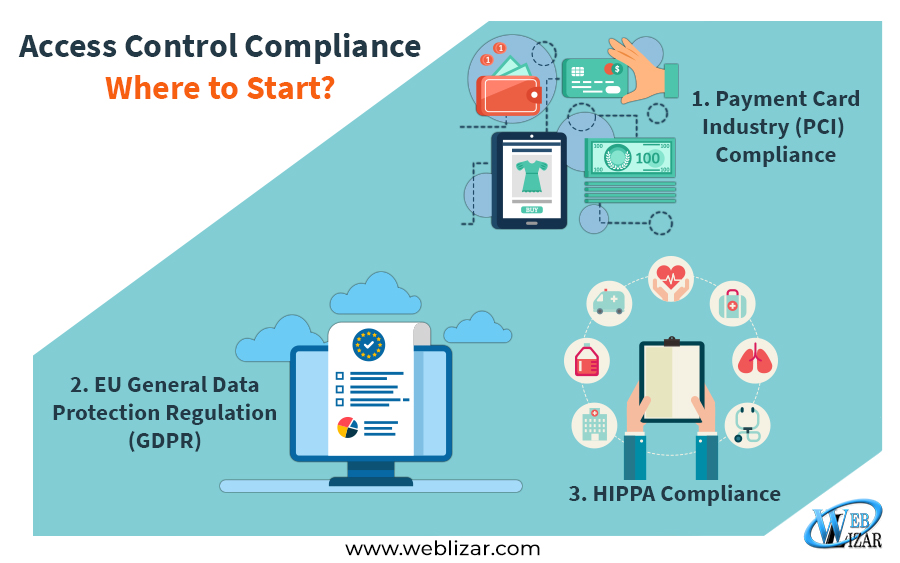Access Control Compliance
Access control is a security technique that regulates who has access to certain resources in a computing environment. This is a key way to minimize the risk for businesses and organizations that deal with valuable information. In this day and age, there are constantly new security breaches for businesses both small and large, and this is something to take seriously.
Most organizations use electronic access control systems to take charge of restrictions, regulations, and authorization. Proactive defense is always the best defense. The main goal of access control is to reduce the risk of unauthorized people accessing physical and logical systems.
These compliances should be built into the company security infrastructure. In this guide, we’ll break down what exactly access control is, and how to start implementing your own compliance within your organization.
Access Control and Compliance
First, let’s take a closer look at access control and compliance separately. Just about every aspect of company data relies on access. For instance, you need to get through the door to even speak to a representative of the company. On a digital scale, you need to login to a specific area via a security protocol to access sensitive data.
For specific industries, there are compliance standards that need to be in place in order to even enter the marketplace. There are security compliance grades to navigate between, and these can be complicated if you don’t take the process slowly. Compliance is also a way to charge credit card data directly if you’re conducting business via PCI (Payment Card Industry) compliance.
Though it sounds complicated, compliance simply means following the laws and standards of your industry. For access control, that means following security measures usually issued by an official authority. This authority exists to protect consumers, clients, and businesses alike.
Types of Compliance
Now that you understand what compliance is and how it applies to access control, let’s break down some of the most common types of compliance. Some of these are industry standard while others are related to a geographic region. The best way to determine which are the most relevant to your line of business is to speak to a compliance attorney who can provide specific direction.
- Payment Card Industry (PCI) Compliance – As we mentioned above, any commercial company that deals with card payments needs to be PCI compliant. This is most fundamentally found in the e-commerce industry, and compliance has to do with encryption, data-sharing, and privacy rules.
- EU General Data Protection Regulation (GDPR) – One of the most well-known compliance laws that are new as of the last year is the GDPR compliance. This is mandatory for any business that collects customer data from European markets.
- HIPPA Compliance – Known as the Health Insurance Portability and Accountability Act of 1996, this compliance is specific to the health and wellness industry and has to do with patient records and data privacy.
These are only a few of the common access control compliance regulations you’ll find for conducting business. Aside from those above, many compliances are optional, though useful for showing your commitment to security.
Your Access Control Compliance Strategy
Navigating all of these different access control compliance concerns isn’t always simple. Security concerns are growing, and it’s always better to be safe than sorry. Ongoing monitoring and awareness is key to staying on the cusp of the best security standards.
It’s important to obtain compliance certifications for a number of reasons. First, you’ll meet your customers’ security requirements which builds trust. You’ll also improve the quality of your access controls. More importantly, you’ll increase your revenue by showing you value your customers’ security and protection.
One of the best ways to get started with your own access controls is with a GPO tool by SolarWinds or another industry-specific tool of the trade. Ultimately, it’s up to you to take security seriously if you want to avoid a data breach. A certified access control system will provide more security, efficiency, and scalability.

